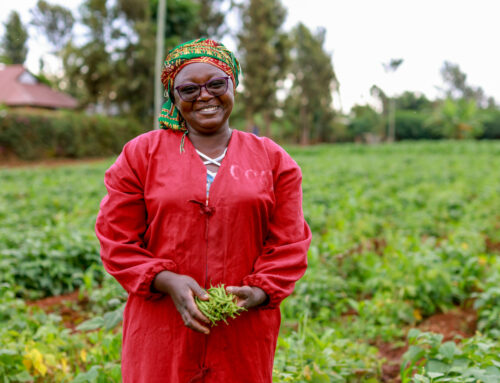What do we know about food loss and waste?
Food loss and waste is getting a lot of attention lately, and for good reason. Statistics are alarming. While the world is producing 17% more food than it did 30 years ago, almost half of that never reaches consumers. This situation is even more worrying when we consider that the world is facing a severe food security crisis, intensified by climate change. More than the 815 million people in the world suffer from hunger, with the majority of them living in rural areas of developing countries and who are frequently family farmers, pastoralists or fishers.
The world’s population is predicted to reach 9.1 billion by 2050, and meeting that growing demand will require an increase of 70% in food availability. A significant part of this growth will take place in developing countries, where steadily increasing urban populations continue to create complex and lengthy food supply chains that involve many actors, and present challenges in delivering safe, nutritious, high-quality food.
In order to meet future demand, food production systems need to increase their efficiency from farm to fork. While a range of technologies are helping to increase efficiencies, we are still moving in an unsustainable direction, as other key challenges remain unsolved: accessibility (to energy, technology, resources etc), access to markets, distribution & consumers behaviors.
International organizations, such as the FAO and the Rockefeller Foundation, are working to draw attention to the scale of global hunger and malnutrition, as well as to the interconnected challenges and risks along food production systems. They complement their awareness-building work with efforts to develop actions for achieving the Sustainable Development Goal (SDG) 2 – to achieve Zero Hunger by 2030. As well, these organizations provide important information about the current situation of global food production and consumption, causes and solutions towards food losses and waste.
We have summarized key concepts and up-to-date statistics around food losses and waste that are important to consider:
What is food loss and waste and what are the key facts?
Food loss and waste are defined as a decrease in the quantity or quality of edible food that is intended for human consumption.
Food loss
Food loss is mainly caused by the malfunctioning of the food production and supply system, the term refers to food that is lost in the early stages of the supply chain—i.e., before it reaches consumers. These losses could be due to managerial and technical limitations in early stages of food supply chains, such as a lack of proper storage facilities, cold chain, proper food handling practices, infrastructure, packaging, or inefficient marketing systems.
Food waste
This refers to the removal from supply chains of food that is still good for human consumption. This is done either by choice or by out of safety requirements after the food is spoiled or expired due to poor stock management or neglect.
Key facts about food loss
According to the Food and Agricultural Organization (FAO) these are they key data points relating to food loss.
Wasted Food Crisis
• Every year, roughly one third (30%) of the food produced globally for human consumption — approximately 1.3 billion tonnes — is lost or wasted.
Food waste rates
• Food wastage rates are 45-50% for all fruits and vegetables; 35% for fish and seafood, 30% for cereals, 20% for dairy products and 20% for meat.
Food loss in South America & Africa
• The food currently lost or wasted in Latin America and Africa could feed 600 million people.
• In developing countries, 40% of losses occur at post-harvest and processing levels while in industrialized countries more than 40% of losses happen at the retail and consumer levels.
Food Waste: Challenges and Coordination Gap
• In developing countries, food waste and losses occur mainly at early stages of the food value chain, as a result of financial, managerial and technical constraints in harvesting techniques, and storage and cooling facilities.
• A lack of coordination between actors in the supply chain is an important contributing factor of food losses.
• Losses during harvest, sorting, and grading are mostly due to discarding to meet quality standards set by retailers.
Socioeconomic and Environmental Impact of Food Loss and Waste
• When the quality of food at the farm level deteriorates significantly, that produce has to be sold at a lower price or even discarded. These types of food losses during the harvest and storage phase translate into lost income for small farmers. That can, in turn, decrease food availability in markets, lead to increased food prices, and in turn reduce the capacity of low-income consumers to access food.
• Food loss and waste also amount to a major squandering of resources, including water, land, energy, labour and capital. They also result in the production of needless greenhouse gas emissions, which contribute to climate change.



